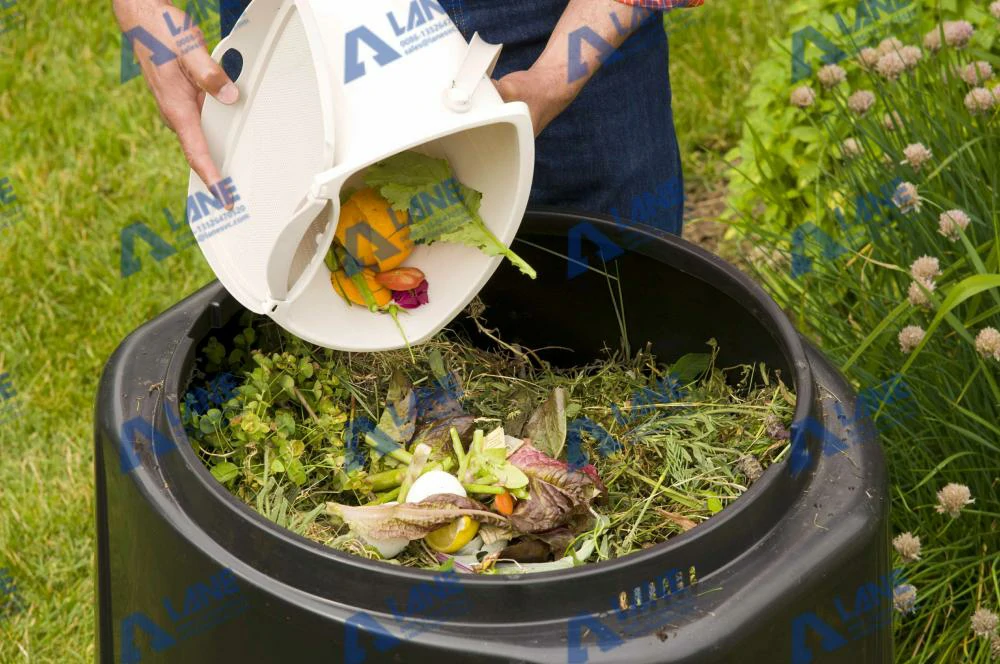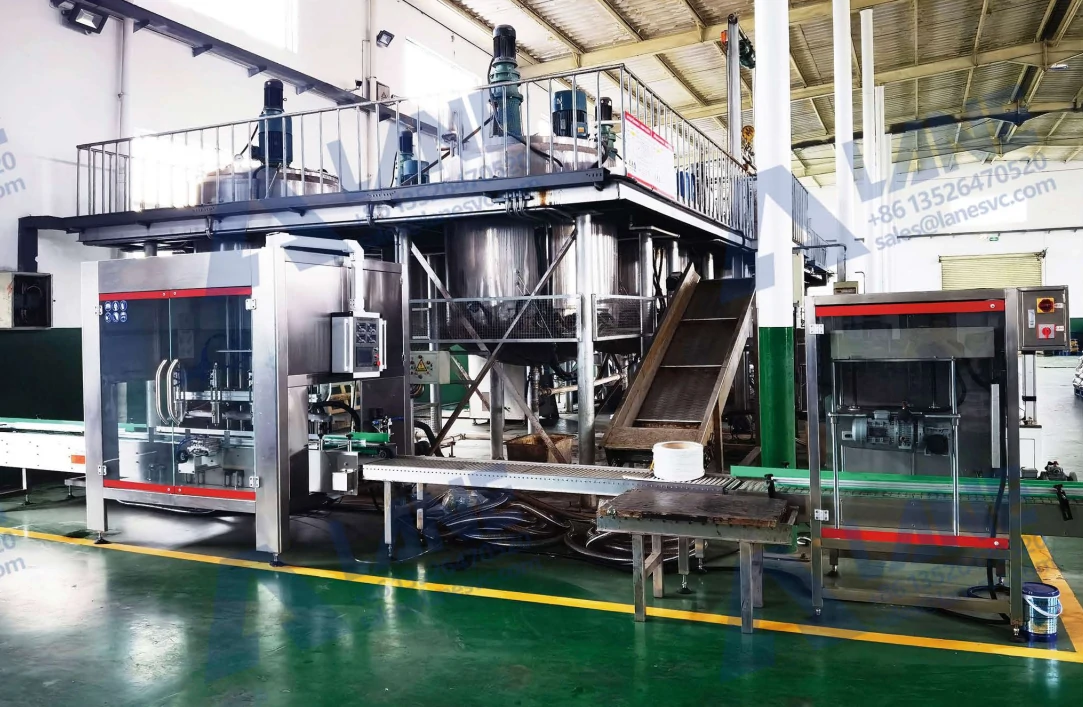
Liquid Fertilizer from Fruit and Vegetable Waste: Turning Waste into Sustainable Farming Power
Liquid fertilizer from fruit and vegetable waste is one of the most innovative solutions for sustainable agriculture. With global food supply chains generating millions of tons of fruit and vegetable waste every year, transforming these residues into nutrient-rich liquid fertilizer not only reduces environmental pollution but also supports organic farming and circular economy goals.
At LANE Heavy Industry, we specialize in designing and manufacturing advanced liquid fertilizer production lines that efficiently convert fruit and vegetable waste into high-quality liquid fertilizer. With our expertise and global service experience, farmers and agribusinesses can maximize resource utilization while reducing costs.

Fruit and vegetable waste is a valuable raw material. When left untreated, it contributes to greenhouse gas emissions and landfill overflow. By producing liquid fertilizer from fruit and vegetable waste, farmers and industries gain multiple benefits:
Nutrient-Rich Fertilizer: Contains natural nitrogen, phosphorus, potassium, amino acids, and micronutrients.
Eco-Friendly Solution: Reduces organic waste pollution.
Low Production Cost: Raw materials are abundant and inexpensive.
Improved Crop Yield: Liquid fertilizers are easily absorbed by plants, boosting growth and resilience.
Circular Economy: Converts waste into value, closing the loop in food supply chains.
| Benefits | Traditional Disposal | Liquid Fertilizer from Fruit and Vegetable Waste |
| Waste Volume | High landfill load | Reduced significantly |
| Environmental Impact | Pollution, methane emissions | Eco-friendly & sustainable |
| Fertilizer Value | None | High nutrient content |
| Economic Return | Costly waste management | Profitable fertilizer sales |
Raw Material Pre-Processing
Collected fruit and vegetable waste is first treated in the drum composting machine, where tumbling action softens organic matter, reduces volume, and starts microbial activity to prepare for fermentation.
Controlled Fermentation
The pre-processed waste is then transferred into a vertical fermentation tank. Here, conditions such as temperature, oxygen, and pH are automatically monitored and adjusted, ensuring efficient microbial decomposition and nutrient release.
Solid–Liquid Separation
After fermentation, the mixture is separated using the screw extrusion dehydrator, which presses liquid out of solids. The inclined dewatering machine provides additional moisture reduction, maximizing liquid yield and leaving solids suitable for composting.
Purification
The extracted liquid is passed through a dual filter system to remove suspended particles and impurities, creating a clean and stable liquid fertilizer solution.
Nutrient Enrichment
To enhance fertilizer quality, the centrifugal extractor concentrates soluble nutrients, balances components, and improves overall nutrient availability for crops.
Sterilization
The filtered liquid fertilizer is sterilized using a UV sterilizer, which eliminates harmful pathogens and extends shelf life while ensuring compliance with organic standards.
Storage & Homogenization
The finished liquid fertilizer is transferred into stainless steel storage tanks, where it is homogenized and tested for quality consistency before distribution.
Final Packaging & By-Product Utilization
The liquid fertilizer is packaged in containers or bulk tanks for sale and use. Solid residues are further processed into compost using the drum composting machine, ensuring full utilization of waste resources.

LANE Heavy Industry provides complete turnkey solutions for liquid fertilizer plants. Our advantages include:
Customized Design: Equipment tailored to the type and volume of fruit and vegetable waste.
Durable Materials: Corrosion-resistant stainless steel tanks for long service life.
Automation: PLC-controlled systems for batching, fermentation, and packaging.
Global Support: From design and installation to training and after-sales service.
Sustainability: Energy-efficient systems that reduce operational costs.
Example 1: India – Tomato Processing Factory
A tomato processing plant in India partnered with LANE to handle its daily fruit and vegetable waste. By installing a LANE liquid fertilizer production line, the factory achieved:
Processing Capacity: 15 tons of waste per day.
Fertilizer Output: 8,000 liters of liquid fertilizer monthly.
Economic Return: Reduced waste disposal costs by 40% and generated new revenue from fertilizer sales.
Sustainability Recognition: Gained certification from local agricultural authorities as an eco-friendly enterprise.
Example 2: Indonesia – Vegetable Wholesale Market
In Jakarta, a large vegetable market struggled with waste management. With LANE’s fermentation and liquid fertilizer system, the market transformed tons of discarded vegetables into liquid fertilizer, which was then supplied to nearby rice farmers. Results included:
Cleaner Environment: Reduced landfill contributions significantly.
Community Benefit: Created a closed-loop waste-to-fertilizer system.
Farm Productivity: Rice farmers reported yield increases of 15% after applying the liquid fertilizer.
Global Market Trends for Liquid Fertilizer from Fruit and Vegetable Waste
The global liquid fertilizer market is projected to surpass USD 20 billion by 2030.
Demand for organic liquid fertilizers is increasing in Asia-Pacific and Africa due to soil health concerns.
Governments are offering subsidies and incentives for waste-to-fertilizer projects.
Food processing industries are under pressure to adopt eco-friendly waste solutions, opening huge opportunities for liquid fertilizer production.

Investing in a liquid fertilizer production line delivers both environmental and financial returns:
Low Raw Material Cost: Waste is readily available at low or zero cost.
High Profit Margin: Organic liquid fertilizer often sells at a premium price.
Quick Payback Period: Many plants achieve ROI in 12–18 months.
Multiple Revenue Streams: In addition to fertilizer, by-products like biogas or compost can be sold.
Frequently Asked Questions (FAQ)
Q1: What types of fruit and vegetable waste can be used?
A: Peels, cores, spoiled produce, juice residues, and leafy vegetable waste.
Q2: How long does fermentation take?
A: Typically 7–15 days, depending on waste composition and tank type.
Q3: Is liquid fertilizer safe for all crops?
A: Yes, when processed correctly, it is suitable for cereals, vegetables, fruits, and cash crops.
Q4: What is the shelf life of liquid fertilizer from fruit and vegetable waste?
A: Usually 6–12 months when properly sterilized and packaged.
Q5: Can small businesses start liquid fertilizer production?
A: Yes, LANE offers compact systems for small enterprises as well as industrial-scale lines.
Producing liquid fertilizer from fruit and vegetable waste is not just about recycling—it is about building a sustainable agricultural future. By adopting advanced production lines, farmers, food processors, and markets can turn waste into valuable fertilizer, reducing costs and supporting eco-friendly farming.
With LANE Heavy Industry, you gain access to reliable equipment, global expertise, and long-term service support. Whether you manage a small market or a large food processing factory, our solutions ensure efficient production of liquid fertilizer that benefits crops, farmers, and the environment alike.
For more details, please feel free to contact us.
Henan Lane Heavy Industry Machinery Technology Co., Ltd.
Email: sales@lanesvc.com
Contact number: +86 13526470520
Whatsapp: +86 13526470520
Leave a Comment
Latest Posts
LANE has more than 500 successful cases and is committed to providing customers with first-class solutions, high-end machinery and equipment, and one-stop pre-sales, sales and after-sales comprehensive customer service.